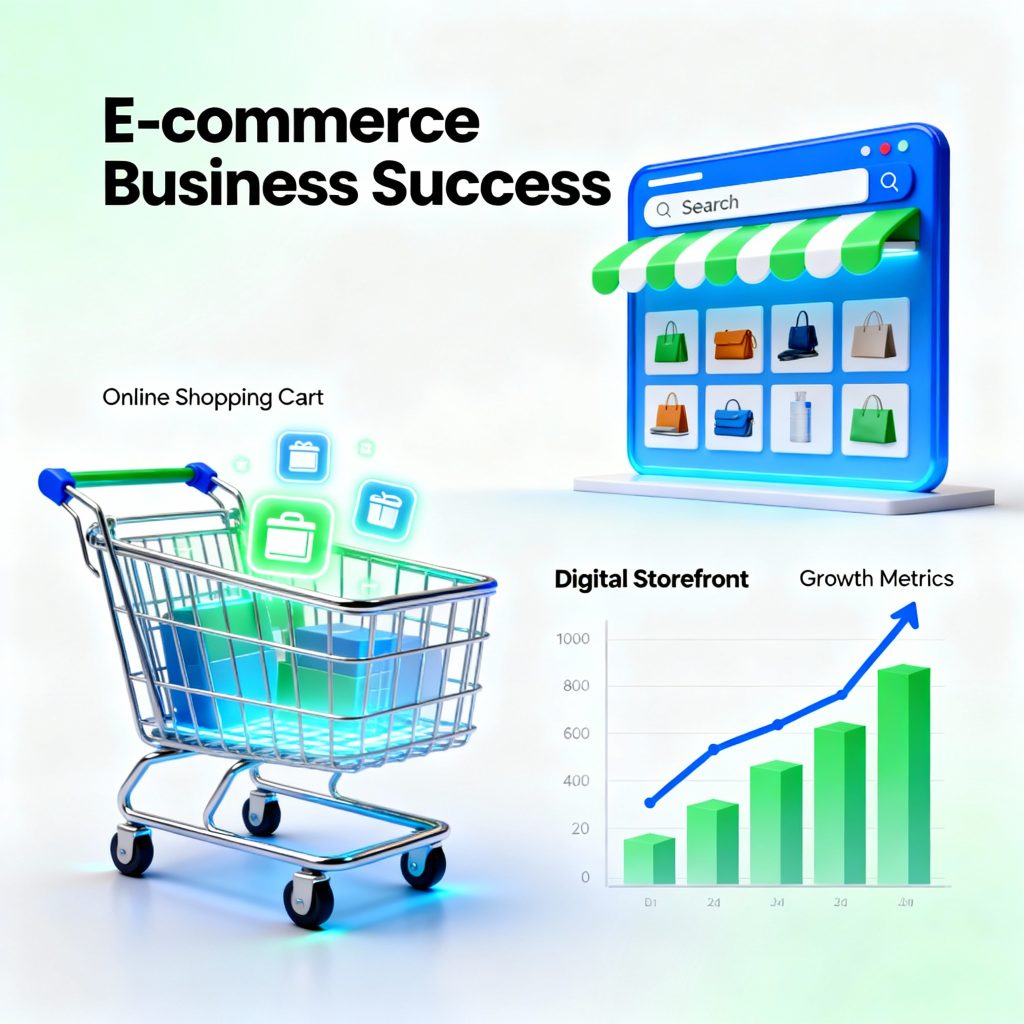The e-commerce landscape has undergone a dramatic transformation. What started as simple online selling has evolved into a sophisticated ecosystem where success demands strategic thinking, technology integration, and customer-centric approaches. The global e-commerce market is projected to reach $7.89 trillion by 2028, representing unprecedented opportunity for entrepreneurs willing to embrace modern business models.
The Evolution of E-commerce Business Models
E-commerce has transcended traditional dropshipping limitations through technological advancement and strategic sophistication. Modern e-commerce businesses operate with profit margins ranging from 40-90% while leveraging automation, artificial intelligence, and data-driven decision making.
The transformation centers on five revolutionary business models that consistently generate substantial revenue:
Private Label Products deliver 40-60% profit margins with complete brand control, allowing entrepreneurs to customize products, pricing, and marketing strategies. Unlike traditional retail, private label businesses eliminate middlemen costs and create unique value propositions that competitors cannot replicate.
Print-on-Demand offers 10-30% profit margins with zero inventory risk, enabling businesses to test markets without upfront investment. This model particularly appeals to creative entrepreneurs seeking to monetize designs while maintaining operational flexibility.
Subscription Boxes generate 40-60% profit margins through recurring revenue streams that compound customer lifetime value. The predictable income allows for strategic planning and sustainable growth trajectories.
Digital Products achieve 70-95% profit margins due to minimal production costs and infinite scalability potential. These products require single creation efforts with unlimited sales potential, making them attractive for knowledge-based entrepreneurs.
Fast Dropshipping maintains 15-25% profit margins while competing with traditional retail through improved fulfillment times and customer experience optimization.
Modern Private Label Strategies: Building Brand Empires
Private labeling represents the pinnacle of e-commerce sophistication, transforming generic products into branded experiences that command premium pricing. Successful private label businesses focus on market gaps and customer pain points rather than competing on price alone.
The private label advantage extends beyond profit margins to include complete pricing control, customized marketing strategies, and rapid market adaptation. Retailers can respond to trends within weeks rather than months, adjusting products based on customer feedback and market demands.
High-margin private label categories consistently outperform traditional retail:
Organic Supplements leverage the growing health consciousness trend, with consumers seeking clean-label, non-GMO formulations that private label brands can customize for specific demographics.
Plant-Based Snacks capitalize on dietary shifts toward vegetarian and vegan lifestyles, offering allergen-friendly and nutrient-rich alternatives to conventional snacking options.
Skincare and Beauty Products benefit from personalization trends, allowing private label brands to create targeted formulations for specific skin types and concerns.
Eco-Friendly Products respond to environmental consciousness, positioning private label brands as sustainable alternatives to traditional products.
The McKinsey research reveals that private label products can carry approximately two times the gross margin of national brands, making them exceptionally attractive for businesses seeking sustainable profitability.
The Print-on-Demand Revolution
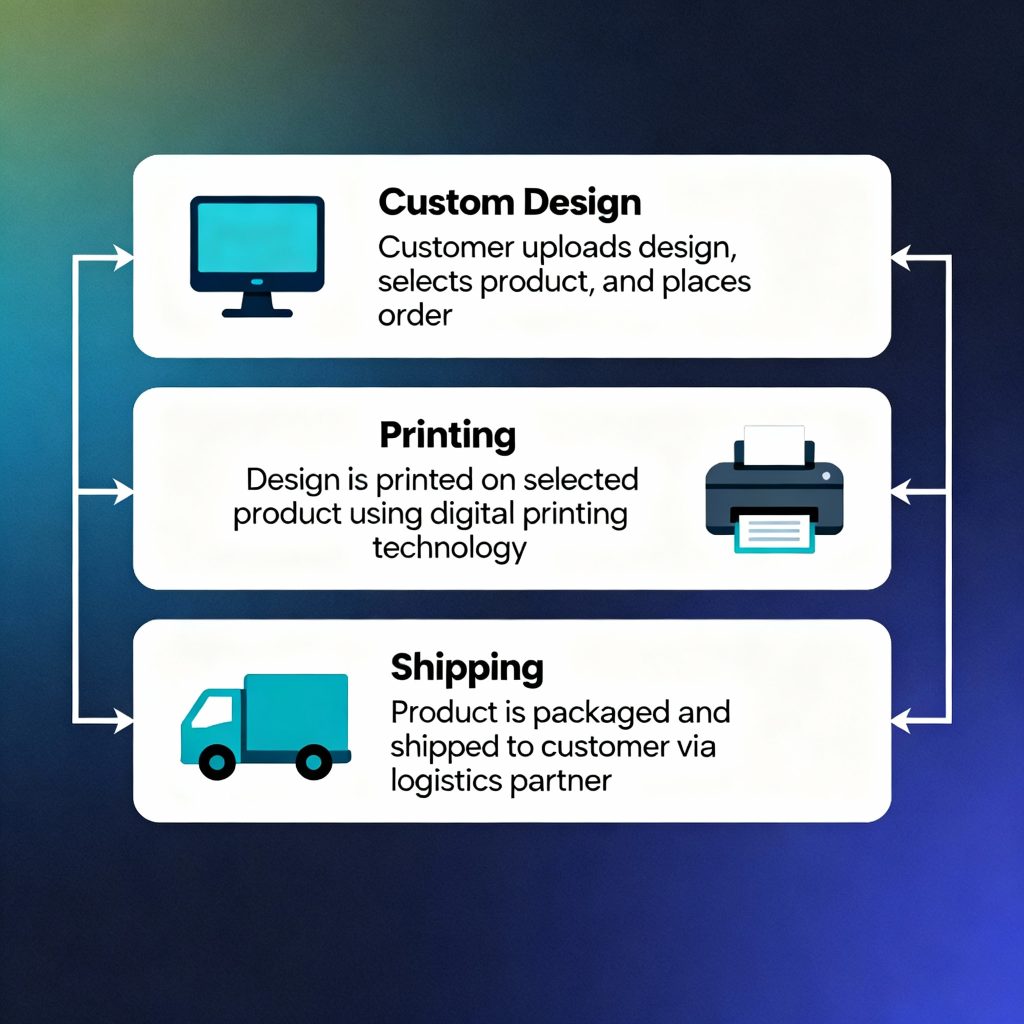
Print-on-demand has evolved from a simple fulfillment method to a comprehensive business strategy that eliminates inventory risks while maximizing creative potential. The POD market is projected to increase from $6.17 billion in 2022 to $39.4 billion by 2030, with average POD business owners earning up to $10,000 per month in passive income.
Modern POD businesses succeed through strategic product selection, design excellence, and market positioning. Unlike traditional approaches focused solely on t-shirts and mugs, successful POD entrepreneurs diversify across home décor, accessories, and seasonal products while maintaining consistent brand messaging.
Key POD Success Strategies:
Niche Market Focus allows businesses to serve specific audiences with targeted designs that resonate deeply rather than appealing broadly to general markets.
Quality Control Systems ensure consistent customer satisfaction through supplier vetting, sample ordering, and customer feedback monitoring.
Seasonal Adaptation capitalizes on trending events, holidays, and cultural moments without inventory commitments or storage concerns.
Multi-Platform Distribution maximizes reach through Amazon, Etsy, Shopify, and social commerce channels while maintaining centralized brand management.
The Adobe research indicates that POD businesses succeed through testing product concepts without expensive inventory commitments, making market validation both affordable and rapid.
Subscription Box Business Mastery
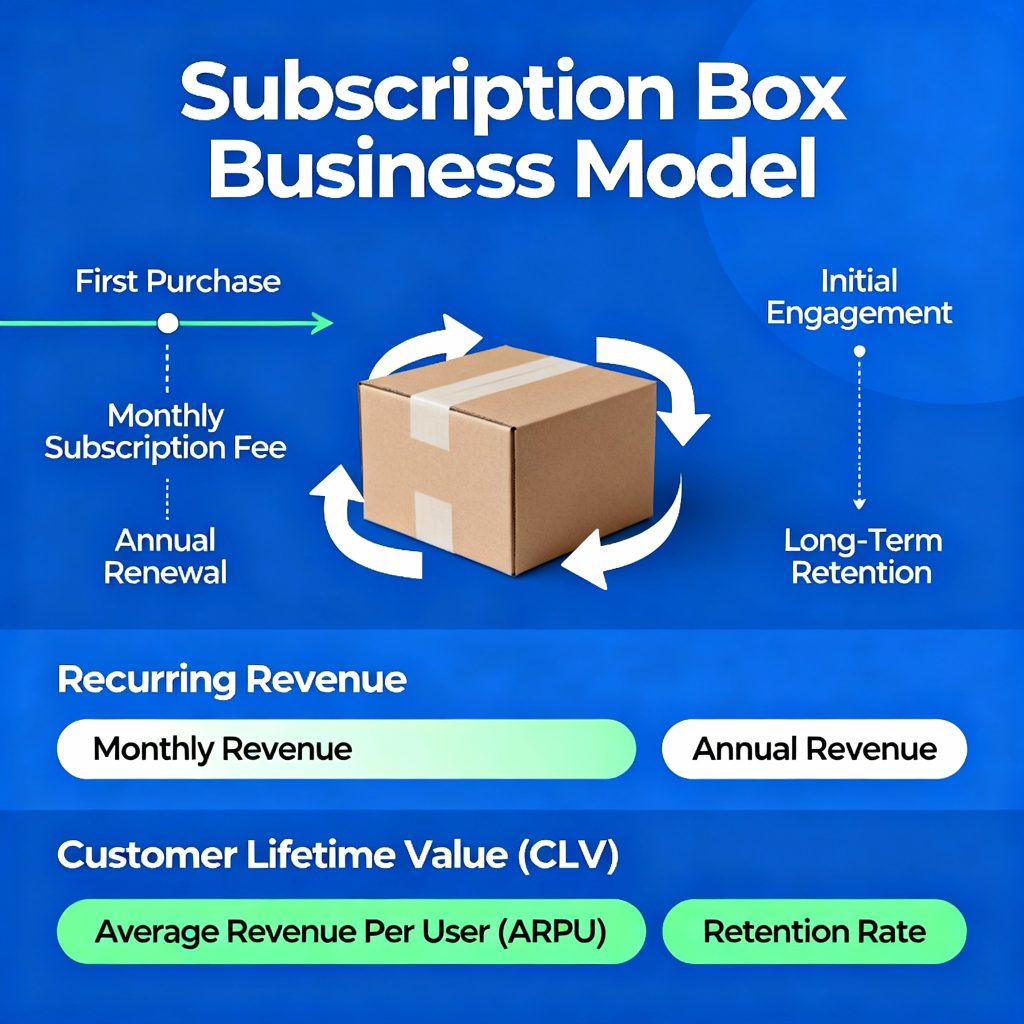
Subscription boxes represent the ultimate recurring revenue model, generating predictable income streams that compound over time. The average subscription box business maintains 40-60% profit margins while building customer relationships that extend far beyond individual transactions.
Successful subscription box strategies focus on customer retention, value delivery, and operational efficiency:
Tiered Pricing Models allow businesses to serve diverse customer segments while maximizing revenue per subscriber through premium offerings and upselling opportunities.
Personalization Technology uses customer data to curate relevant products, improving satisfaction and reducing churn rates that typically plague subscription businesses.
Community Building transforms subscribers into brand advocates who generate organic marketing through social sharing and word-of-mouth recommendations.
The Chargebee analysis shows that reducing customer churn by just 5% can boost profits by 25-95%, emphasizing the critical importance of customer retention strategies.
Digital Products: The Ultimate Scalability Model
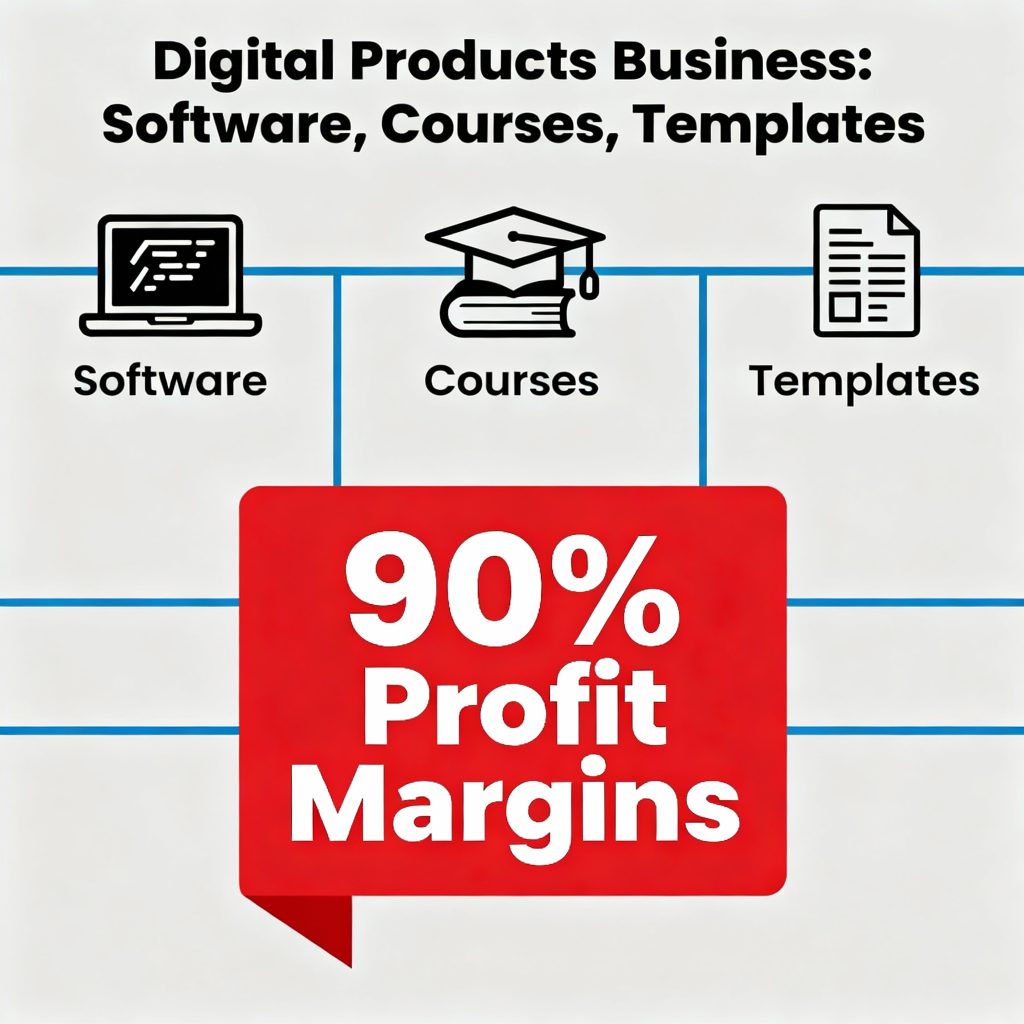
Digital products represent the pinnacle of scalable business models. They offer 70-95% profit margins through single creation efforts with unlimited sales potential. The digital goods market is valued at $124.32 billion. It’s projected to reach $416.21 billion by 2030, growing at 27.34% annually.
High-Performance Digital Product Categories:
Online Courses and Educational Content leverage expertise into scalable revenue streams. Pricing ranges from $49-$2,000 depending on depth and market positioning.
Digital Templates and Design Assets solve immediate customer problems. They require minimal ongoing maintenance while generating passive income through marketplace and direct sales.
Software and Applications create recurring revenue through subscription models. However, they require higher initial development investments.
Stock Photography and Creative Content serve the growing content marketing industry. They offer evergreen demand across multiple industries and use cases.
The Sellfy research demonstrates significant profit potential. Successful digital product creators achieve 60-80% profit margins on e-books. They earn 70-90% margins on online courses, making knowledge monetization exceptionally attractive.
AI-Powered E-commerce Automation
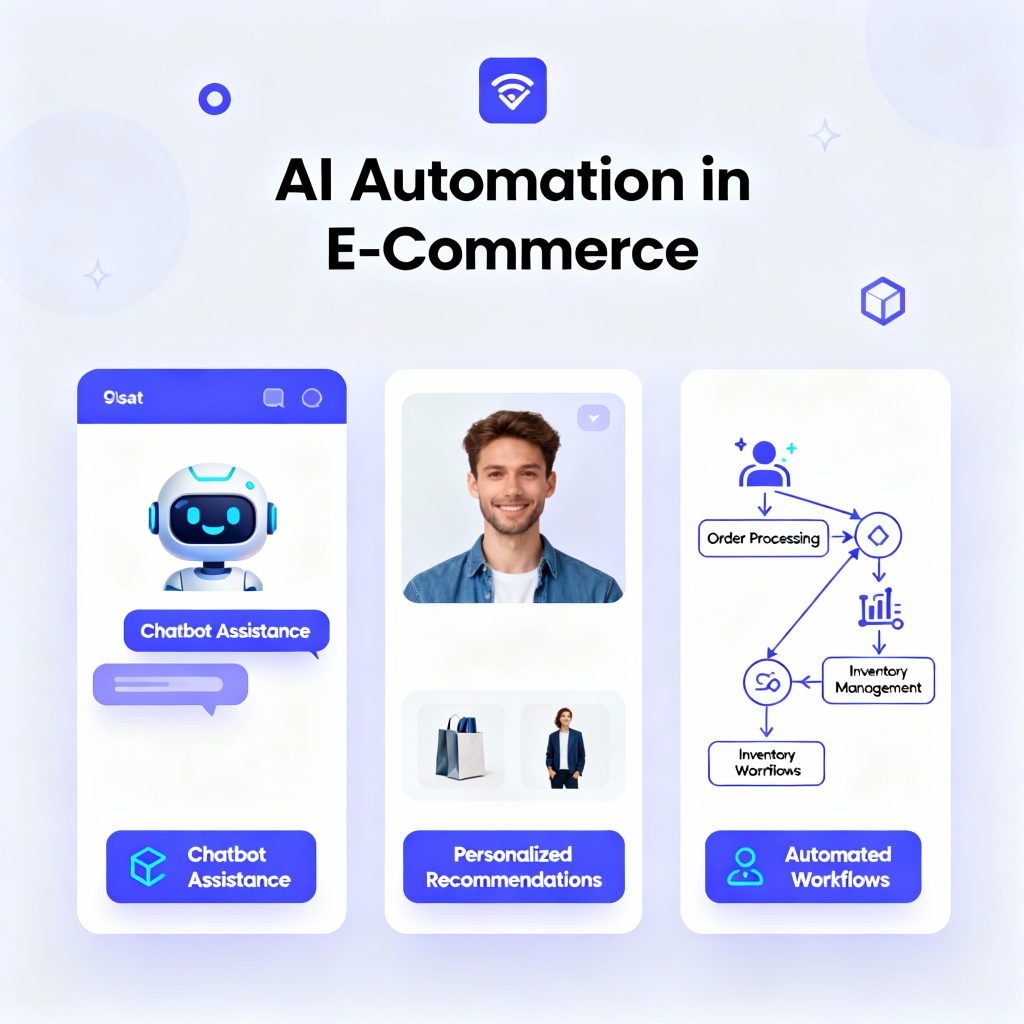
Artificial Intelligence has revolutionized e-commerce operations, enabling businesses to automate customer service, personalize shopping experiences, and optimize pricing strategies in real-time. The EcoptiAI research shows that AI automation can reduce procedural costs by 52.7% while achieving 92% accuracy in customer interactions.
Transformative AI Applications:
Customer Service Automation through chatbots and virtual assistants reduces response times by 40% and lowers operational costs by 20-30% while improving customer satisfaction scores.
Personalized Product Recommendations increase average order values through AI-driven suggestion engines that analyze customer behavior and purchase patterns.
Dynamic Pricing Optimization adjusts prices based on demand, competition, and customer segments to maximize both sales volume and profit margins.
Inventory Management uses predictive analytics to prevent stockouts and overstock situations while optimizing cash flow and storage costs.
Fraud Detection Systems protect businesses and customers through real-time transaction analysis that identifies suspicious patterns without creating friction for legitimate purchases.
The IEEE research indicates that AI integration improves campaign outcomes for 66.4% of marketers while reducing manual effort and increasing operational efficiency.
Advanced Customer Acquisition Strategies
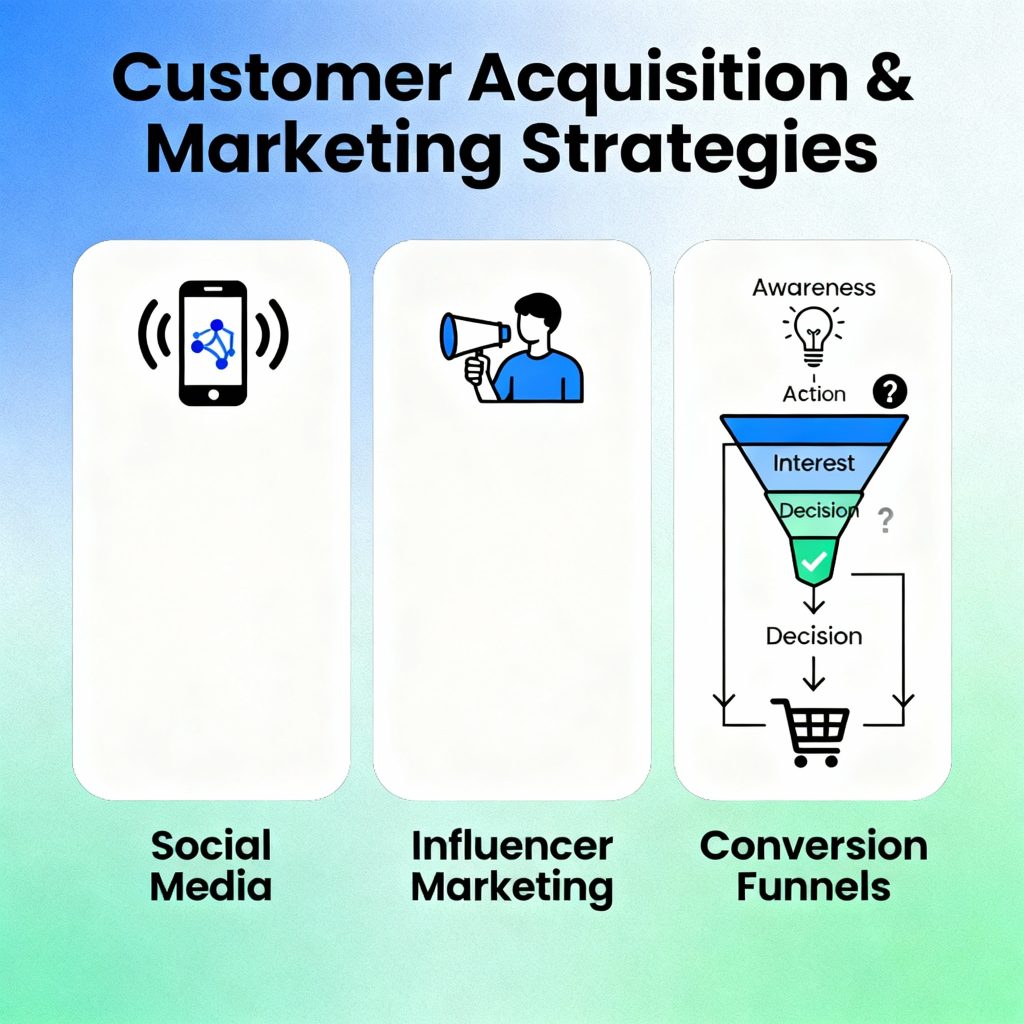
Customer acquisition in 2025 requires sophisticated, multi-channel approaches that balance cost-effectiveness with scaling potential. The average e-commerce customer acquisition cost ranges between $50-$130, though this varies significantly by industry and strategy.
High-ROI Acquisition Channels:
Email Marketing delivers an average ROI of 4,200%, equating to $42 for every $1 spent, making it the highest-returning marketing channel for established businesses.
Influencer Marketing reaches $32.55 billion in global market size by 2025 with 80% of marketers affirming it as highly effective, particularly through nano-influencers who maintain higher engagement rates.
Pay-Per-Click Advertising returns $2 for every $1 spent while offering precise targeting and immediate scalability for profitable products.
Content Marketing generates three times more leads per dollar spent than traditional advertising while costing 62% less and building long-term brand authority.
Strategic Customer Acquisition Framework:
Customer Lifetime Value Optimization focuses on acquiring customers with 3:1 LTV-to-CAC ratios rather than minimizing acquisition costs, ensuring sustainable unit economics.
Multi-Channel Attribution tracks customer journeys across touchpoints to optimize budget allocation and improve conversion rates through data-driven insights.
Retention-First Approach uses loyalty programs and personalization to increase repeat purchase rates and reduce acquisition dependency over time.
The Modern Dropshipping 2.0 Approach
Traditional dropshipping has evolved into Dropshipping 2.0, emphasizing brand building, customer experience, and value creation over price competition. Modern dropshipping businesses achieve success through strategic supplier partnerships, AI-powered automation, and customer-centric operations.
Dropshipping 2.0 Success Factors:
Fast Shipping Solutions compete directly with Amazon Prime through domestic supplier networks and 1-3 day delivery options that exceed customer expectations.
Brand Development transforms generic products into branded experiences through packaging, marketing, and customer service excellence.
AI-Powered Personalization delivers customized shopping experiences and product recommendations that increase conversion rates and average order values.
Sustainable Product Focus capitalizes on growing environmental consciousness through eco-friendly product selection and ethical sourcing practices.
Niche Market Specialization reduces competition and increases profitability through micro-niche targeting and specialized product curation.
E-commerce Success Framework for 2025
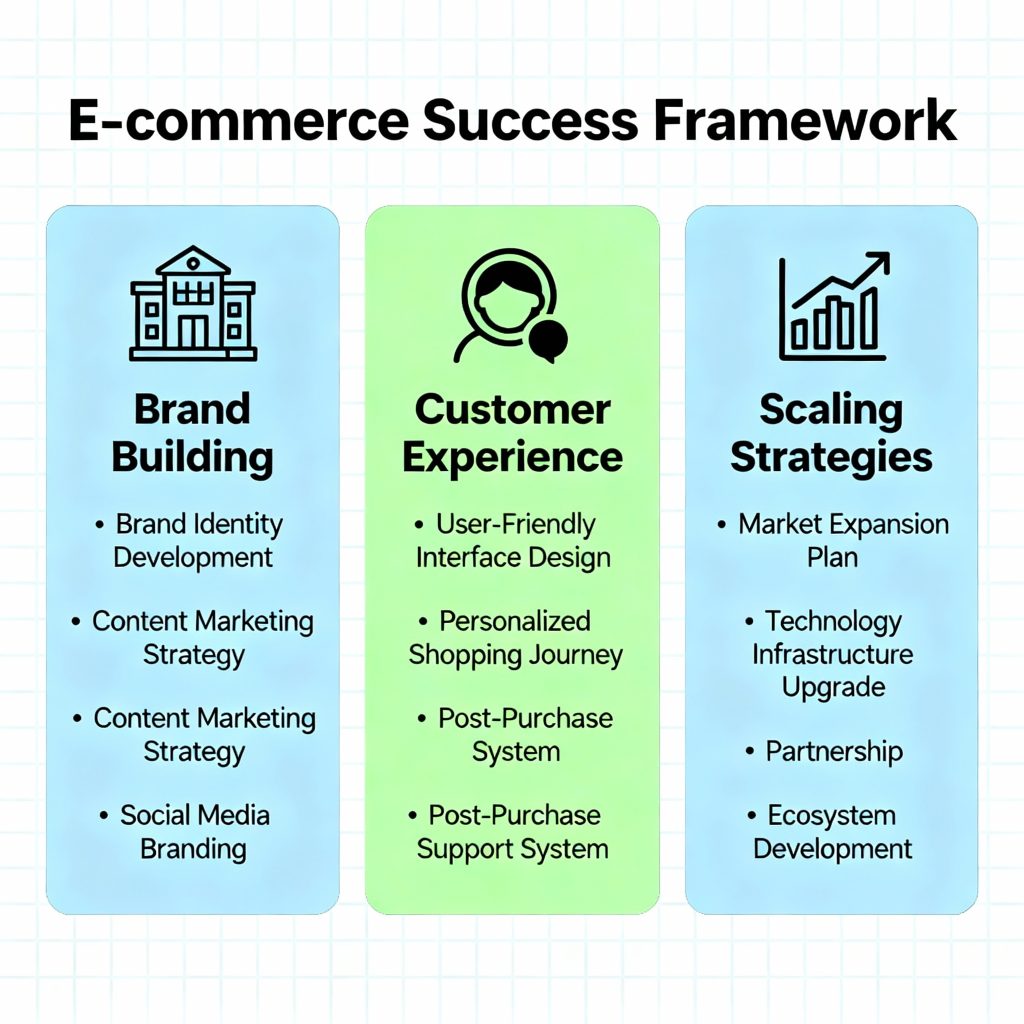
Building a successful e-commerce business in 2025 requires systematic implementation of proven strategies rather than random tactics. The most successful businesses follow structured frameworks that prioritize customer value creation, operational efficiency, and sustainable scaling.
The Five-Stage Success Framework:
Stage 1: Market Validation and Product Selection
Focus on solving real customer problems rather than chasing trending products. Successful businesses identify underserved market segments and develop solutions that create genuine value.
2nd Stage: Brand Development and Positioning
Create differentiated brand identities that resonate emotionally with target customers while establishing clear value propositions that justify premium pricing.
Stage 3: Technology Integration and Automation
Implement AI-powered systems for customer service, inventory management, and marketing optimization to reduce operational costs while improving customer experience.
4th Stage: Customer Acquisition and Retention
Develop multi-channel marketing strategies that balance cost-effective acquisition with long-term customer relationship building
Stage 5: Scaling and Optimization
Focus on operational efficiency, system automation, and strategic partnerships that enable sustainable growth without proportional increases in management complexity.
Critical Success Metrics:
- Customer Lifetime Value to Customer Acquisition Cost (LTV:CAC) ratio of 3:1 minimum
- Monthly recurring revenue growth of 15-25%
- Customer retention rates exceeding 80%
- Gross profit margins above 40%
- Operational automation covering 70%+ of routine tasks
Recommended Learning Resources
YouTube Channels for E-commerce Education:
Comprehensive Dropshipping Tutorials:
- “Beginners Complete Dropshipping Tutorial for 2025 (11+ Hour Guide)” – Comprehensive free course covering product research to scaling
- “How To Start Shopify Dropshipping In 2025” – Complete setup and optimization guide
- “Beginners Guide To Start A Dropshipping Business in 2025” – 7+ years experience condensed into actionable steps
Private Label Business Training:
- “How I Built a Private Label Business That Mostly Runs Itself” – Real-world case studies and automation strategies
- “How To Start a Private Label Brand (Step by Step Guide)” – Million-dollar brand blueprint
- “FREE Amazon FBA Course | COMPLETE Step by Step” – Private label and Amazon FBA mastery
E-commerce Development Courses:
- “How To Create An eCommerce Website With WordPress 2025” – Complete website building tutorial
- “How to Make an E-Commerce Website in 10 Minutes” – Quick setup guide
- “How to Start an Ecommerce Business in 2025 (FREE Course)” – Complete business launch strategy
These resources provide over 50 hours of professional training content covering every aspect of modern e-commerce business development, from initial planning through advanced scaling techniques.
Conclusion: Your E-commerce Success Timeline
The e-commerce opportunity in 2025 exceeds any previous period in digital commerce history. The global market’s growth trajectory, combined with technological advancement and changing consumer behaviors, creates unprecedented potential for entrepreneurs willing to implement sophisticated strategies.
Success requires strategic thinking over tactical execution, focusing on sustainable business models that prioritize customer value creation and operational excellence. The businesses that thrive will be those that embrace AI automation, build genuine brands, and optimize for long-term customer relationships rather than short-term profits.
The pathway to $10,000-$100,000+ monthly revenue exists through systematic implementation of proven frameworks, continuous learning, and adaptation to evolving market conditions. The entrepreneurs who commit to excellence and customer-centric approaches will capture the largest share of this extraordinary opportunity.
Start with one model, master the fundamentals, then scale systematically. The time for action is now – the e-commerce revolution continues to accelerate, and early adopters will establish the strongest market positions for sustained success.

